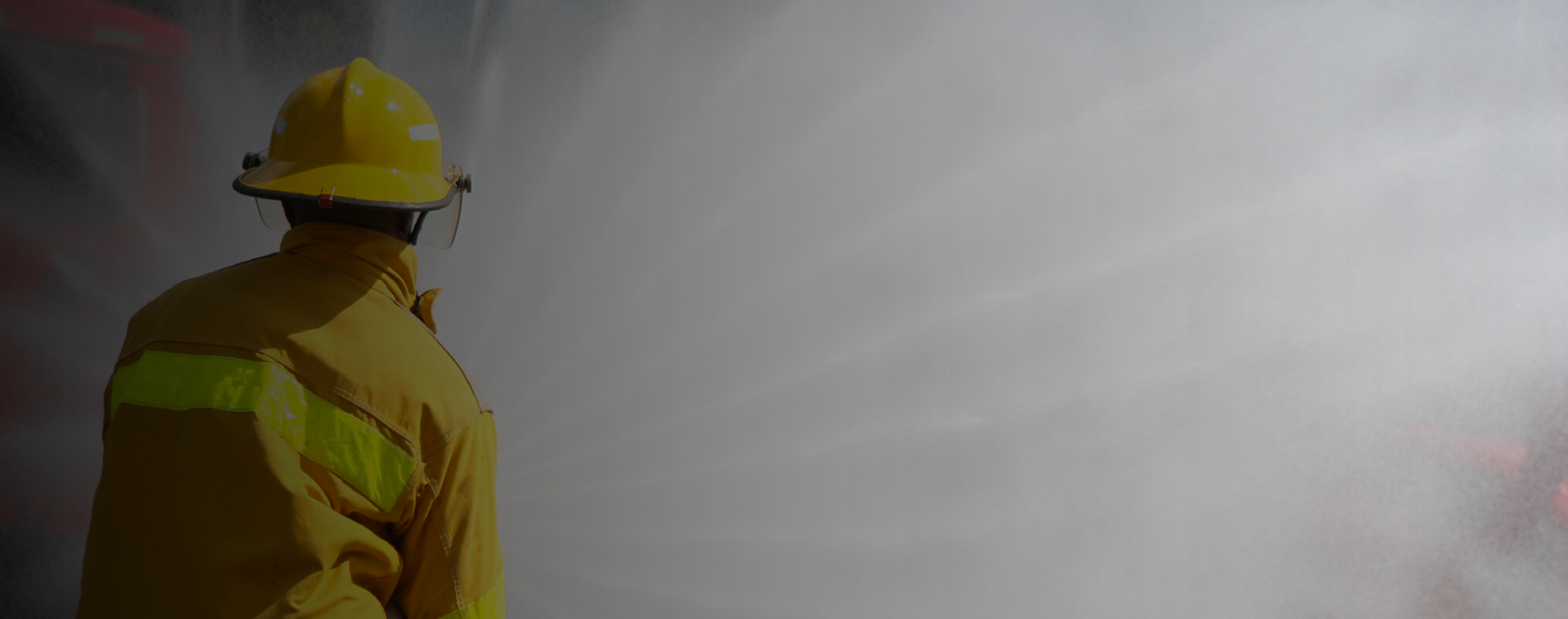Toweling off after my shower, I glanced down at the twin six-inch scars that decorate my knees — parting gifts from 30 years as a firefighter. After I asked him how the cartilage was crushed out of existence, the doctor who performed my first knee replacement at the Hospital for Special Surgery in New York City answered, “What did you think would happen after 30 years?” A couple of years later, the other knee was replaced for the same reason.
The visible scars are easy to deal with along with other assorted marks collected during my firefighting career. Burns, cuts, nicks, bruises, strained muscles and bulging discs are all part of the experience. Fully expected, straightforward to cope with.
On the other hand, there are scars that no one can see — the emotional scars from firefighting. These are the memories of death and destruction. Hundreds of lost homes, lost lives and shattered bodies. Car crashes, suicides, drownings, and of course, death by fire. Some of the memories can be stored in the back of your mind, not unlike putting something in a box and sticking it on the top shelf in the back of the closet. Others are always there.
One icy morning, as I was driving to work, I came across a motor vehicle accident involving three or four cars. By the condition of the cars, the situation didn’t appear to be all that bad. Certainly, no one would need to be cut out of their car. That was all true until I walked over to the Volvo station wagon. There was a little girl, an infant, lying on the front seat, unconscious and not breathing. Her older brother was in the back seat. As I picked up the infant, his first words were, “Is she dead? I know she’s dead.” He couldn’t have been more than six years old. I took off my coat, laid it on the ground with the baby on top and started CPR. The police arrived and said the fire department and paramedics were on the way. I continued CPR until the ambulance arrived to take her to the hospital. All the time, her brother was asking about his sister.
As you might have guessed, this little girl died. She was riding unrestrained, no car seat or seatbelt. The force of the accident tossed her body into the dashboard. The next day, an insurance adjuster called me to discuss the accident. His primary concern was whether the girl was conscious at any time. To me, those questions were horrible. To the adjuster, they were just business. You see, an infant who isn’t conscious after an accident, and subsequently dies, isn’t worth much in the insurance calculations. If she had sustained a permanently disfiguring injury and survived, the value of the claim would have been orders of magnitude greater than if she died. Stuff like that sticks with you, forever.
Then there are the scars of Christmas Eve. On two occasions, separated by decades, I had to put people out of their homes because they were not fit for human occupation. No one was injured or killed. But the juxtaposition of having to relocate families and then going home to join my family and enjoy a Christmas Eve celebration and feast was jarring.
The first incident involved an immigrant family, decidedly poor, living in a three-room apartment. I no longer remember the exact reason for having to relocate them, but I am sure it involved some system failure such as no heat, a gas leak, water leak, problems with the electricity or a combination of the failures. Hopefully, I thought at the time, the social services department would find them a place to stay.
But I can tell you this. It was late afternoon; the sky was what I liked to call Hudson Valley gray. Overcast, dark, ominous and very cold. The buildings on the block were all dark except for the glare of the streetlights and light shining out of the windows. Few holiday decorations. In one word, bleak.
A couple of hours later, we were at my parents’ home along with my brothers and their families. This neighborhood was a middle-class subdivision — the homes bright with holiday lights, the smell of wood smoke wafting from the chimneys. Inside, a Christmas tree, roaring fireplace, fresh shrimp, and other goodies on the table before a roast turkey dinner with all the trimmings. After dinner we would exchange gifts, enjoy watching the kids opening packages filled with toys, books and the occasional article of clothing.
All through dinner, my mind was occupied with thoughts of the family on the dark street. What happened to them? Were they able to get something to eat? I didn’t know then, and still don’t know today.
Many years later, I had to repeat that earlier nightmare. This time, the call involved homeless people living in an abandoned, three-story apartment house. Extension cords, along with cable TV wire, ran along the back of the row homes from an occupied building to this condemned wreck of a place — a sign the supposedly abandoned building was occupied. The electric meter had been removed by the power company months earlier, so there should not have been any electrical power in the building. Wrong. The occupants jumped the lugs where the meter would be attached and were drawing power from the grid. While effective, this is very dangerous.
This call came in around lunchtime on Christmas Eve. Great, I thought. At least social services will be available to assist these folks. Wrong again. The answer from social services was to wait until after 2:00 p.m., when the after-hours service comes online. My next call was to the commissioner of social services. Not available, came the reply. A local reporter had tagged along to see what was going on. My next idea: Call the commissioner’s office again and let them know that I would plaster this all over the media if I didn’t get a call back to resolve the problem. Eventually, someone from social services arrived and made arrangement for the occupants to go to an emergency shelter. At least they would be out of the cold and could get something to eat.
Once again, my family went to Christmas Eve dinner at my parents’ home. As usual, there was a roast in the oven, goodies on the table and gifts under the tree. And in my head, all I could think about was five more people I had displaced from their “home” during the holiday season.
Every Christmas, even after so many years, those people come to visit in my head, like the Ghosts of Christmas Past. I know I did the right thing in each of these cases, but the memories never fade.
It took time and work to learn how to manage the ugly memories. For me, it was and still is a lot of reading. The Stoic philosophers, Viktor Frankl, and others like James Stockdale provide ongoing guidance because the only thing you have control over in the fire service is how you react to what you experience.
I would be remiss if I didn’t mention that I sought out mental health care because my primary care physician pointed out that my affect had become flat. I didn’t realize it, but I was numb to the world and totally uncaring and cold. No feelings — not even a bit of empathy for anyone or anything. I had shut off my most human instincts as a way of protecting myself from all the pain I had seen.
Burying your emotions can work, but only for a short time. Eventually, after decades of stamping out my feelings and reactions, they had begun to re-emerge and manifest in behaviors and reactions that I came to regret. My advice to those just starting out in the fire service is never to ignore your emotions. Instead, find positive ways to cope rather than engaging in negatives.
I try to keep my career in perspective by recalling a quote from Viktor Frankl, a psychiatrist who survived years of deprivation in the concentration camps of Nazi Germany: “Forces beyond your control can take away everything you possess except one thing, your freedom to choose how you will respond to the situation.” Frankl emerged in 1945 with the number 119104 inked on his arm, a visible reminder of the torture and hardship forever tattooed on his soul. In a very small way, the scars on my knees serve as a similar reminder of 30 years of service and suffering, of trauma and tenderness. I’ll carry them as mementos for the rest of my life.



